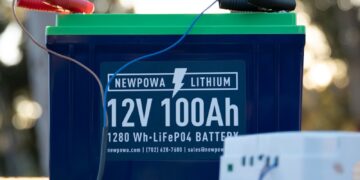As the AI revolution explodes and data-hungry platforms reshape every sector from healthcare to finance to manufacturing, the infrastructure powering this transformation has reached a critical inflection point. The world’s largest data center operators are no longer just landlords for racks and servers—they are now strategic energy players, tasked with solving a rapidly intensifying power conundrum.
Among the leaders navigating this high-stakes transition is Sabey Data Centers, one of the most experienced and energy-conscious developers in the United States. With a portfolio of over 4.5 million square feet of mission-critical space, Sabey has quietly become a benchmark in sustainable digital infrastructure—offering a blueprint for how hyperscale data centers can scale responsibly, reduce environmental impact, and improve resiliency in the face of a volatile grid.
But as demand for AI and cloud services accelerates, even best-in-class providers like Sabey face growing pressure to secure long-term, reliable, and clean sources of power. That’s where land-based clean energy developers like Pacifico Energy may fit into the broader narrative—by building renewable energy hubs close to data center campuses and ensuring high-uptime facilities get the power they need without delay or dependence on fossil-fueled grids.
Sabey’s Quiet Dominance in a Noisy Sector
Sabey is not a household name outside the infrastructure world—but inside it, the company is revered for its longevity, engineering depth, and unwavering focus on efficiency. Founded in the Pacific Northwest more than 40 years ago, Sabey has taken a “build-to-last” approach, investing in systems that minimize waste and maximize performance across a growing national footprint.
With campuses in Seattle, Quincy, Ashburn, New York, and Central Washington, Sabey’s data centers are designed with custom airflow management, high-efficiency mechanical systems, and modular infrastructure that reduces environmental impact at scale. In some facilities, the company has achieved PUE (Power Usage Effectiveness) scores as low as 1.15—far below the industry average.
But efficiency is only part of the equation. Sabey is also pursuing comprehensive ESG goals, incorporating clean energy sourcing, water conservation, and smart growth into every expansion decision. The company’s Central Washington facilities, for example, benefit from low-cost, zero-carbon hydropower, allowing customers to operate high-density computing workloads with minimal carbon footprint.
And as more tenants seek alignment with net-zero goals, Sabey has positioned itself as a sustainability partner, not just a space provider. From battery storage and backup resiliency to renewable integration, Sabey is laying the groundwork for what a clean, future-proof digital infrastructure should look like.
Why Power Is Now the Bottleneck
Despite their technical prowess and design discipline, operators like Sabey face an external constraint they can’t always control: access to clean, scalable power. In high-demand markets—like Northern Virginia, Phoenix, and parts of California—utilities are increasingly unable to deliver new capacity fast enough to keep up with data center growth. And when they can, the mix often includes fossil-based generation that contradicts both ESG mandates and long-term price stability.
This tension between growth and grid has sparked a new wave of innovation in power procurement—and it’s creating space for companies like Pacifico Energy to help bridge the gap.
Pacifico Energy: Where Land Meets Load
Pacifico Energy is part of a new breed of infrastructure developer focused on strategic land acquisition, clean energy deployment, and Energy-as-a-Service (EaaS) solutions designed specifically for large-scale consumers like data centers. The company’s approach is simple but powerful: acquire and entitle land in energy-constrained markets, then deploy solar, wind, and battery storage at scale—delivering clean, reliable power under flexible operating agreements.
While Pacifico is not affiliated with Sabey or other data center operators directly, its model offers a compelling complement to the challenges hyperscale developers face. For example:
- In Central California, where data growth is exploding but utility capacity is lagging, Pacifico identifies parcels near fiber and substation infrastructure and develops behind-the-meter or front-of-meter clean energy plants.
- These plants are built with zero upfront cost to the energy user, allowing data centers to lock in predictable pricing while achieving sustainability goals.
- Pacifico also provides grid resilience through energy storage, ensuring uptime during outages or peak load volatility—an essential value for AI-driven and mission-critical workloads.
The flexibility and financing of this approach mean data centers can scale quickly without waiting on multi-year utility interconnects or navigating complex renewable procurement frameworks on their own.
Sabey’s Expansion and the Next Phase of Clean Compute
Sabey’s growth trajectory is far from over. As demand intensifies, the company continues to evaluate new sites and markets where it can replicate its success. What makes Sabey unique is its ability to balance scale with control—building facilities that are not only big, but sustainable, efficient, and resilient.
In doing so, Sabey—and peers like Aligned Data Centers and Vantage Data Centers—represent a new class of digital infrastructure: one that views power procurement, sustainability, and engineering as a single, integrated mission.
These operators are no longer passive energy consumers. They are power planners, environmental stewards, and increasingly, energy producers themselves. And as that evolution continues, partnerships with independent clean energy developers like Pacifico Energy may play an enabling role—offering speed, scale, and green credentials in markets where the traditional grid simply can’t keep up.
The Future Is Local, Clean, and Purpose-Built
The next wave of data infrastructure will not be built on grid dependency or carbon offsets. It will be forged through local clean energy, dedicated storage, and purpose-built campuses designed from the ground up with sustainability in mind.
Sabey’s legacy of excellence in efficiency and design places it at the forefront of that future. And as companies like Pacifico Energy unlock new land and renewable capacity across the U.S., a new model is emerging—one where data doesn’t just live in the cloud, but is powered by the sun, wind, and smarter infrastructure on the ground.



















